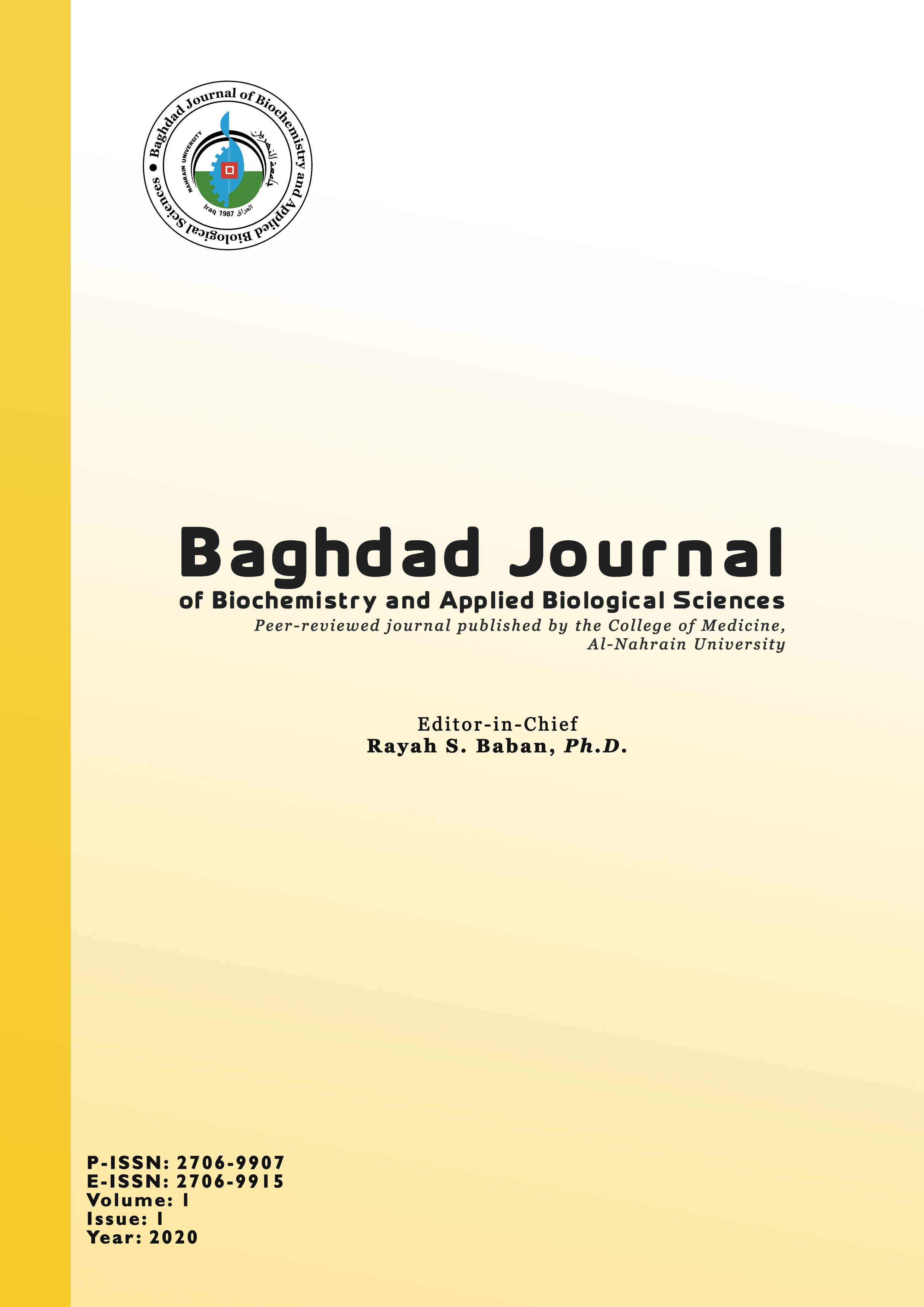Serum placental growth factor and soluble fms-like tyrosine kinase-1 in preeclamptic women at their third trimester of pregnancy
DOI:
https://doi.org/10.47419/bjbabs.v1i01.30Keywords:
third trimester of pregnancy, preeclampsia, placental protein 13, sFLT-1, soluble fms-like tyrosine kinase 1, PLGF, placental growth factorAbstract
Background: Preeclampsia (PE) affects approximately 3% of all pregnancies, and it is still a major cause of the adverse perinatal outcome. PE is a multisystem disease characterized by the development of hypertension and proteinuria. Although PE etiology is not fully known, the placenta seems to play a central role in the development of the disease. The inadequate placentation process results in a change in angiogenic factors levels, such as the soluble form of vascular endothelial growth factor receptor type 1 (sFlt-1) and placental growth factor (PLGF).
Objectives: To investigate the correlation between serum PLGF with soluble sFLT-1 in preeclamptic women at their third trimester.
Methods: A case-control study was carried out from August 2018 till January 2019. In this study, pregnant women were collected from the Al-Elweyia, Al-Hakeem, and Al-Imamain Alkadhimain medical city. The practical part was conducted at the College of Medicine, Al-Nahrain University. The patient group includes 50 preeclamptic women in the third trimester (25 mild and 25 severe). Fifty healthy pregnant women (at their third trimester of gestation) were selected as control. Patients and control were compared for age, serum PLGF, and Sflt-1.
Results: Serum PLGF levels were decreased significantly among women who developed PE (2.14±0.029 pg/ml, 2.44±0.038 pg/ml vs. 2.68±0.017 pg/ml; p<0.05) severe PE, Mild PE, and the control group respectively, while, serum sFlt1 levels were increased significantly (p<0.05) between the groups of PE, (5.81±0.025, 5.51±0.024, 5.19±0.017 pg/ml) severe, mild and control, respectively.
Conclusions: Serum sFlt-1 and PLGF can be considered promising biomarkers for the preeclampsia. sFlt-1 and PLGF the ROC cut-offs (5.67 ng/ml, 2.09 ng/ml, respectively), the specificity and sensitivity of serum PLGF is more than that of serum sFlt-1, for the diagnosis of preeclampsia during the third trimester of pregnancy.
Metrics
Downloads
References
A. Tsiakkas et al. “Serum soluble fms-like tyrosine kinase-1 in the three trimesters of pregnancy: effects of maternal characteristics and medical history”. Ultrasound in Obstetrics & Gynecology 45(5) (2015), pp. 584–590. DOI: 10.1002/uog.14817.
Alice Hoeller et al. “Placental expression of sFlt-1 and PlGF in early preeclampsia vs. early IUGR vs. age-matched healthy pregnancies”. Hypertension in Pregnancy 36(2) (2017), pp. 151–160. DOI: 10.1080/10641955.2016.1273363.
C E Powe, R J Levine, and S A Karumanchi. “Preeclampsia, a disease of the maternal endothelium: The role of antiangiogenic factors and implications for later cardiovascular disease”. Circulation 123(24) (2011), pp. 2856–2869.
Carmen Ra˘dulescu et al. “Placental Growth Factor, Soluble fms-Like Tyrosine Kinase 1, Soluble Endoglin, IL-6, and IL-16 as Biomarkers in Preeclampsia”. Mediators of Inflammation 2016 (2016), pp. 1–8. DOI: 10.1155/2016/3027363.
Demetrios Rizos et al. “Placental growth factor and soluble fms-like tyrosine kinase-1 are useful markers for the prediction of preeclampsia but not for small for gestational age neonates: a longitudinal study”. European Journal of Obstetrics & Gynecology and Reproductive Biology 171(2) (2013), pp. 225–230. DOI: 10.1016/j.ejogrb.2013.08.040.
F C Luft. “Soluble fms-like tyrosine kinase-1 and atherosclerosis in chronic kidney disease”. In Kidney International 85(2) (2014), pp. 238–240.
Jeffry Iman Gurnadi et al. “Difference of concentration of placental soluble fms-like tyrosine kinase-1(sFlt-1), placental growth factor (PlGF), and sFlt-1/PlGF ratio in severe preeclampsia and normal pregnancy”. BMC Research Notes 8(1) (2015). DOI: 10.1186/s13104-015-1506-0.
K Chau, A Hennessy, and A Makris. “Placental growth factor and pre-eclampsia”. Journal of Human Hypertension 31(12) (2017), pp. 782–786. DOI: 10.1038/jhh.2017.61.
Manoj Kumar Jena et al. “Pathogenesis of Preeclampsia and Therapeutic Approaches Targeting the Placenta”. Biomolecules 10(6) (2020), pp. 953–953. DOI: 10.3390/biom10060953.
Olav Lapaire, Andrew Shennan, and Holger Stepan. “The preeclampsia biomarkers soluble fms-like tyrosine kinase-1 and placental growth factor: current knowledge, clinical implications and future application”. European Journal of Obstetrics & Gynecology and Reproductive Biology 151(2) (2010), pp. 122–129. DOI: 10.1016/j.ejogrb.2010.04.009.
Downloads
Published
Issue
Section
Categories
License
Copyright (c) 2020 Nesreen A. Nasser, Rayah S. Baban, May F. Al-Habib, Risala A. Jameel

This work is licensed under a Creative Commons Attribution-NonCommercial 4.0 International License.
The authors retain all proprietary rights, including copyright, such as patent and trademark rights and rights to any process or procedure described in the article.









